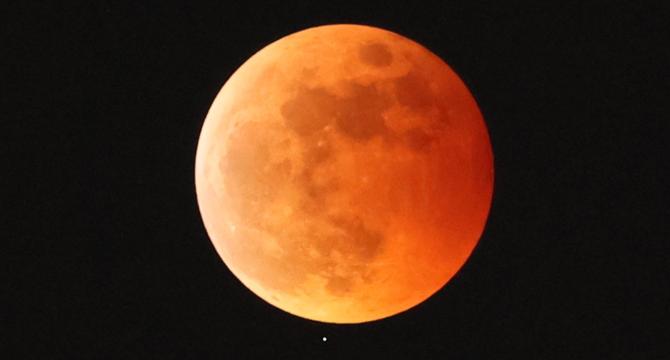Popsci
1M
104

Image Credit: Popsci
How to see the upcoming ‘blood moon’ total lunar eclipse
- On the night of March 13 into March 14, a total lunar eclipse will be visible across North America and other regions, offering a red ghoulish hue, opposite of a solar eclipse.
- To witness the lunar eclipse, individuals in the Western Hemisphere, particularly in North America, can look towards the sky during specific timings provided by NASA.
- During a lunar eclipse, the Earth's shadow covers the moon completely, causing its color to change to a deep, blood-red hue, creating the visual effect of a 'blood moon.'
- The red coloration of the moon during a lunar eclipse is due to the refraction of light through Earth's atmosphere, with red light wavelengths passing through more easily than others.
- The visibility of the blood moon is similar to the red light observed during sunrises and sunsets, as the light travels a greater distance through the atmosphere.
- The difference in the refraction of blue and red light wavelengths in the atmosphere explains the blue color of the sky and the red coloration of the moon during a lunar eclipse.
- The lunar eclipse schedule includes key timings: the moon entering Earth's shadow at 1:09 a.m. EDT, totality beginning at 2:26 a.m. EDT, and concluding with the moon exiting the shadow by 4:47 a.m. EDT.
- Understanding light wavelength's properties plays a crucial role in explaining phenomena like the moon's color change during lunar eclipses and why the sky appears blue.
- Skygazers can enjoy observing the total lunar eclipse with a red hue as the moon passes through the Earth's shadow, showcasing the beauty of celestial events.
- Lunar eclipses, unlike solar eclipses, occur when the Earth blocks sunlight from reaching the moon, leading to the moon's reddish appearance as seen from Earth.
- The upcoming lunar eclipse on March 13-14 offers a natural spectacle for those in the Western Hemisphere to witness the moon's transformation into a captivating 'blood moon.'
Read Full Article
6 Likes
For uninterrupted reading, download the app